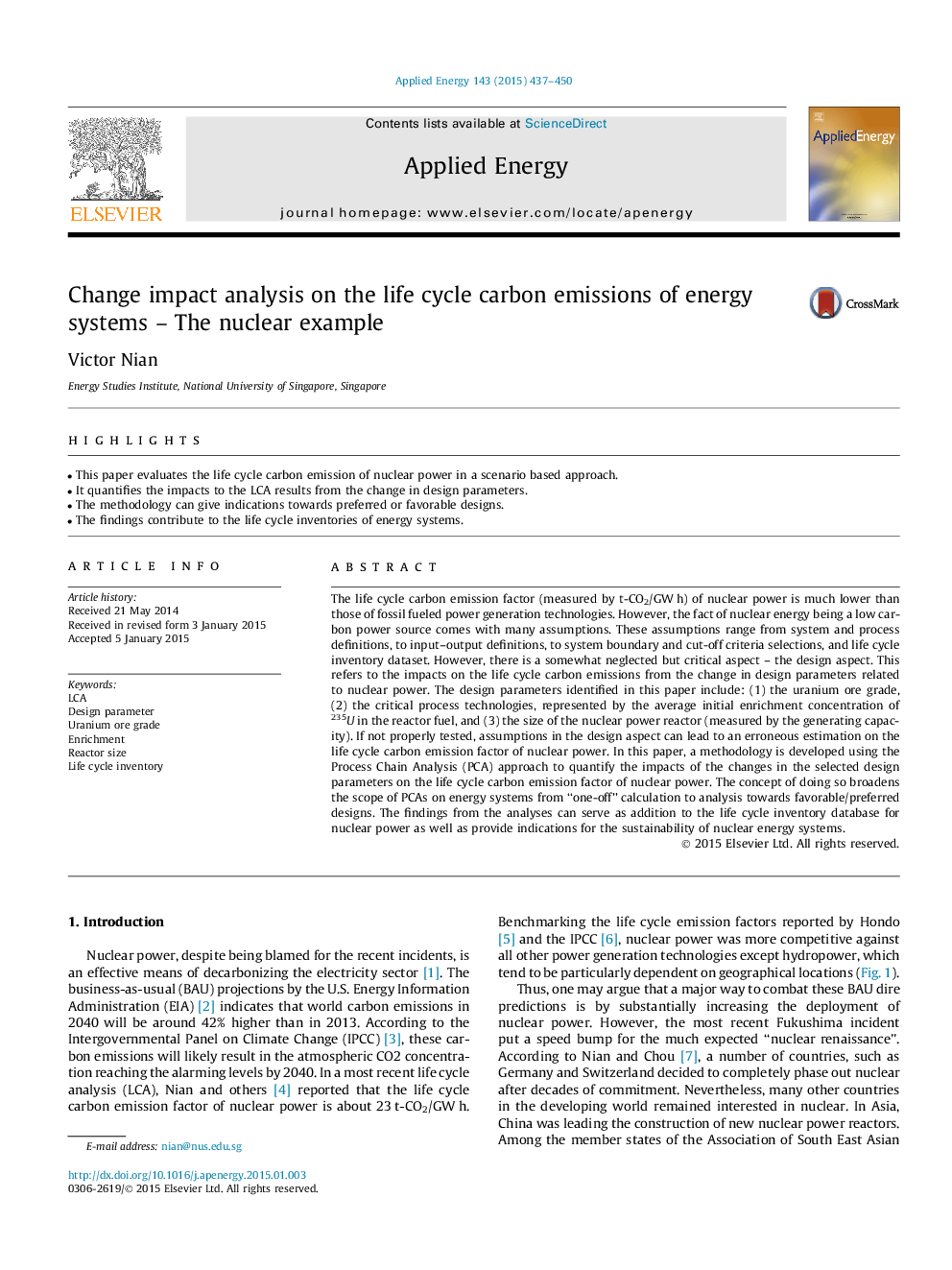| Article ID | Journal | Published Year | Pages | File Type |
|---|---|---|---|---|
| 6687789 | Applied Energy | 2015 | 14 Pages |
Abstract
The life cycle carbon emission factor (measured by t-CO2/GWÂ h) of nuclear power is much lower than those of fossil fueled power generation technologies. However, the fact of nuclear energy being a low carbon power source comes with many assumptions. These assumptions range from system and process definitions, to input-output definitions, to system boundary and cut-off criteria selections, and life cycle inventory dataset. However, there is a somewhat neglected but critical aspect - the design aspect. This refers to the impacts on the life cycle carbon emissions from the change in design parameters related to nuclear power. The design parameters identified in this paper include: (1) the uranium ore grade, (2) the critical process technologies, represented by the average initial enrichment concentration of 235U in the reactor fuel, and (3) the size of the nuclear power reactor (measured by the generating capacity). If not properly tested, assumptions in the design aspect can lead to an erroneous estimation on the life cycle carbon emission factor of nuclear power. In this paper, a methodology is developed using the Process Chain Analysis (PCA) approach to quantify the impacts of the changes in the selected design parameters on the life cycle carbon emission factor of nuclear power. The concept of doing so broadens the scope of PCAs on energy systems from “one-off” calculation to analysis towards favorable/preferred designs. The findings from the analyses can serve as addition to the life cycle inventory database for nuclear power as well as provide indications for the sustainability of nuclear energy systems.
Related Topics
Physical Sciences and Engineering
Energy
Energy Engineering and Power Technology
Authors
Victor Nian,
